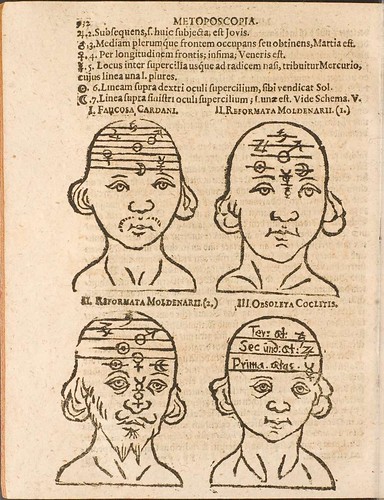
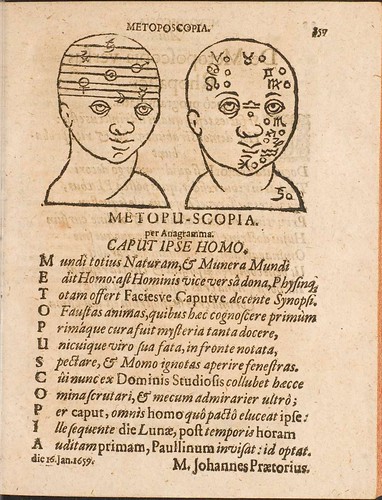
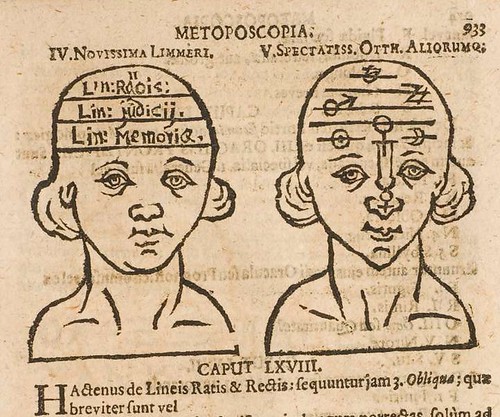
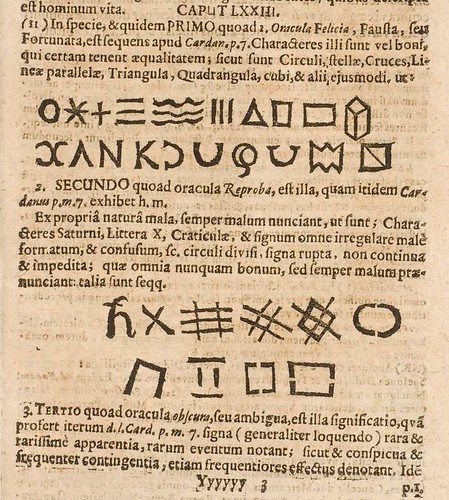
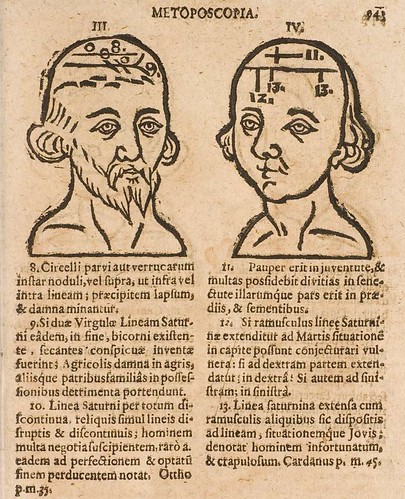
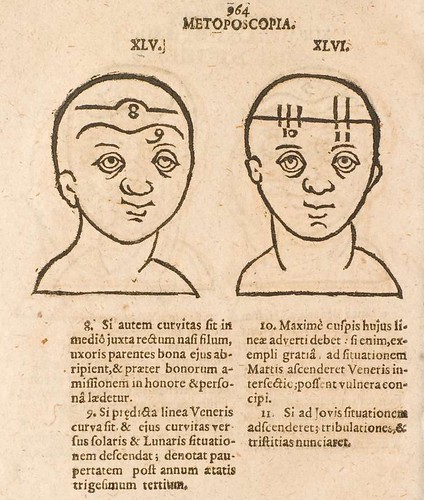


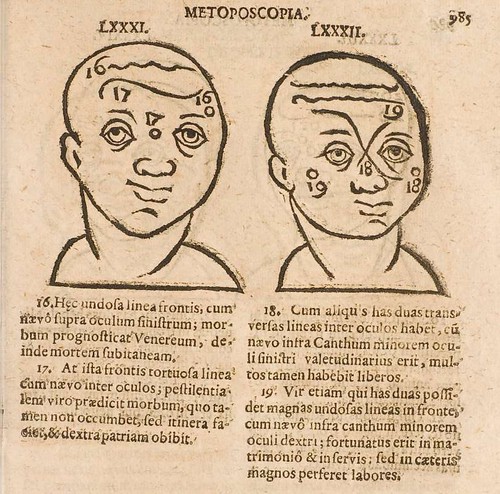
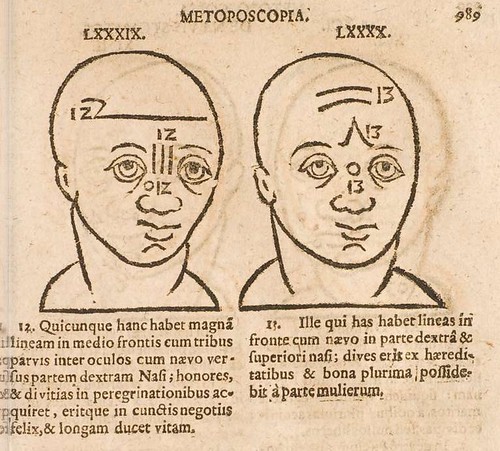

No, we aren't seeing a parade of the local parkour* club membership rejections. These images are, rather, attempting to convey the important forehead topography that one ought to be able to recognise to assess a subject's disposition and future.
Metoposcopy is a pseudo-science (being generous about it) that was developed in the 16th century by the Italian Renaissance mathematician, Gerolamo Cardano (Jerome Cardan), although his treatise on the subject wasn't published until 1658.
An individual's specific pattern of forehead wrinkles was used to analyse their character and, when combined with astrological interpretations, helped a clairvoyant make predictions about the person's destiny. There are apparently a number of works devoted to the subject from the 17th century and this sort of foolish personality and divination technique is related, to an extent, to the 18th and 19th century obsessions of physiognomy and phrenology.
The images above come from a 1661 book, 'Centifrons Idolum Iani Hoc est: Metoposcopia Seu Prosopomantia' by Johannes Praetorius, available from the Wolfenbuettel Digital Library. These constitute perhaps half of the illustrations in the book.
The images below, including the frontispiece with a central metoposcopy facial figure, are also from a book by Johannes Praetorius, but it deals more specifically with chiromancy or palm reading. The book, 'Ludicrum Chiromanticum Praetorii' (1661), is online at Wolfenbuettel Digital Library. The frontispiece is definitely the best illustration in the book and there are further woodcut schematics of palms not shown here.
**(previously: Brain Maps)**
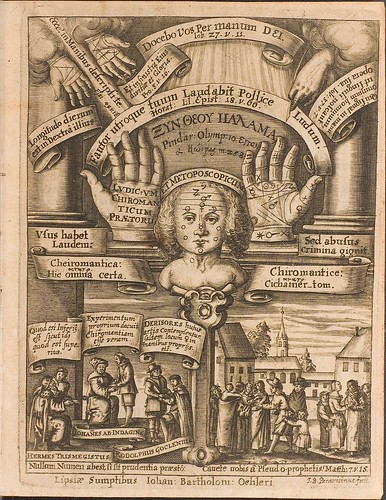
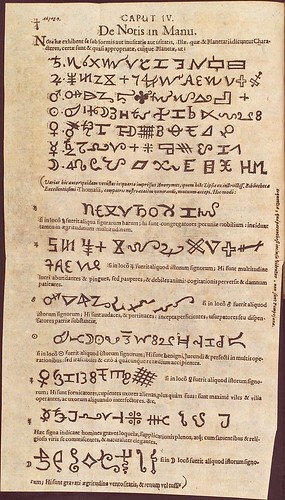
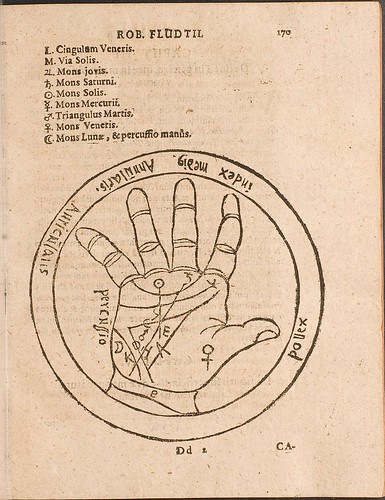

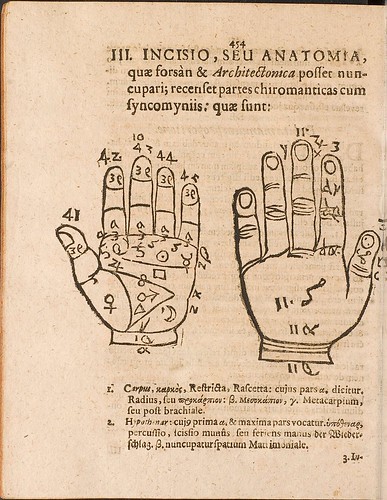




No comments:
Post a Comment